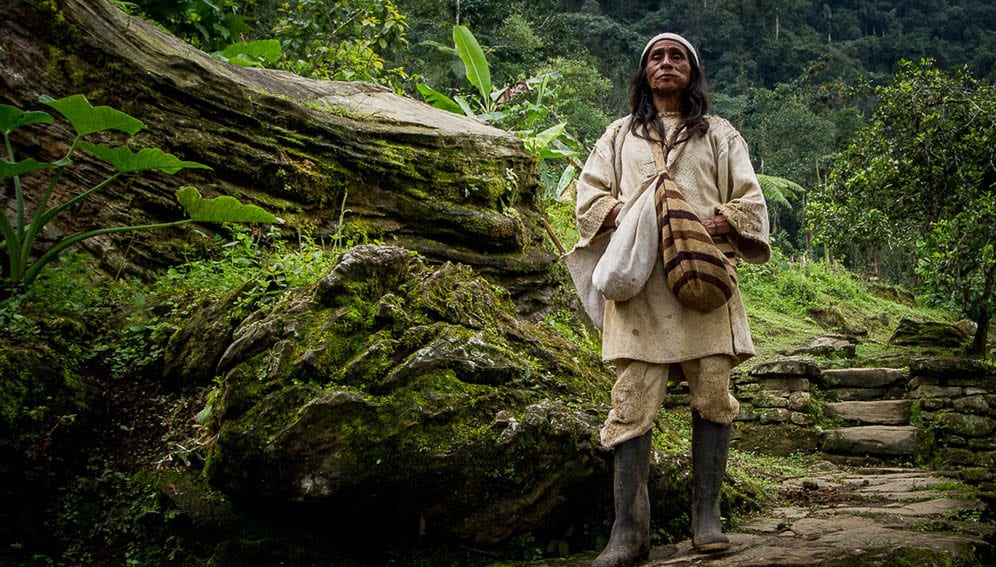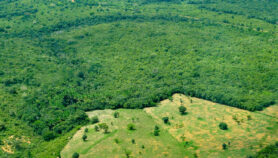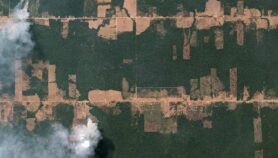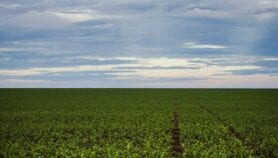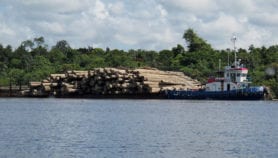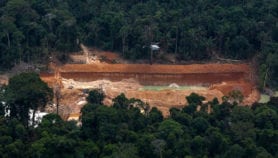By: Aisling Irwin
Send to a friend
The details you provide on this page will not be used to send unsolicited email, and will not be sold to a 3rd party. See privacy policy.
Land managed by indigenous people holds vastly more carbon than previously thought, according to a report that calls for an urgent strengthening of their land rights to avoid its release into the atmosphere.
The legalisation of indigenous people’s rights to forested land is one way of supporting sustainable forest management that keeps carbon locked-in, contributing to climate change mitigation.
But while communities have succeeded in securing governmental recognition of their forest rights for 15 per cent of forests globally, the pace of recognition since 2008 has decreased, according to the Rights and Resources Initiative (RRI), the organisation behind a second report.
“Our data show there is no way we will protect the world’s forests if we don’t protect those who live in them,”
Alain Frechette
This leaves their stewardship on precarious ground, they say, with forests more vulnerable to national-level decisions which may turn land over to logging, commercial agriculture or infrastructure projects that release carbon into the atmosphere.
Both documents were released today, prior to the Global Climate Action Summit in the US city of San Francisco (September 12-14).
Trees, roots and soil under the control of indigenous and other local communities harbour up to five times more carbon than previously estimated, according to the new calculations.
Researchers from the Woods Hole Research Center (WHRC) and the RRI, both based in the United States, arrived at these estimates by combining two datasets: the latest data on carbon sequestered in forests taken from radar and field measurements, and georeferenced tenure data from the LandMark database and other sources.
They say the results cover 64 countries, or nearly 70 per cent of global forest carbon, estimating that over 290,000 million tonnes of carbon are locked up in community-managed lands. This is five times more than previous estimates.
The key reason for the vastly increased carbon figure is the researchers’ inclusion in their calculations of soil carbon down to a depth of two metres, which represents three quarters of the total.
Ed Mitchard, of Edinburgh University’s School of Geosciences in the UK, questions the legitimacy of this.
“The organic matter in the soil doesn’t necessarily disappear if you cut down a forest. There are some bits of soil organic carbon that are very labile — peat, for example — but it’s not quite fair to say the people are protecting these stocks from a future contribution to climate change.”
Wayne Walker, one of the authors based at the WHRC, defends the team’s approach: “The point is, once the forest is gone all bets are off — it’s a protective layer, and by removing it you create the circumstances that make the carbon loss below ground that much more likely.”
Simon Counsell, of the Rainforest Foundation UK, which has projects in Congo mapping community presence in forests and helping them legalise land rights, says the figures, which have been broken down by country, are “very high for Congo … they are very significant and probably in the right order of magnitude”.
Mitchard believes that “the real value in this report is in their significant efforts to map indigenous managed land and put them online for everyone to see”.
At least one third of the tropical and sub-tropical carbon documented in the report is looked after by communities without legal rights over the land, the researchers estimate, adding that a lack of information on tenure from some countries means the figures are likely an underestimate.
“Communities are effective and efficient guardians of the forest,” the organisations have reported. “They are investing substantially in conservation—up to US$1.71 billion in the developing world—and they achieve at least equal conservation results with a fraction of the budget of protected areas, making investment in communities the most efficient means of protecting forests.”Alain Frechette, of the RRI, one of the study’s authors says: “Our data show there is no way we will protect the world’s forests if we don’t protect those who live in them”.
* The caption of the picture above was amended on October 14th 2018 to correct the spelling of shaman from sherman.


